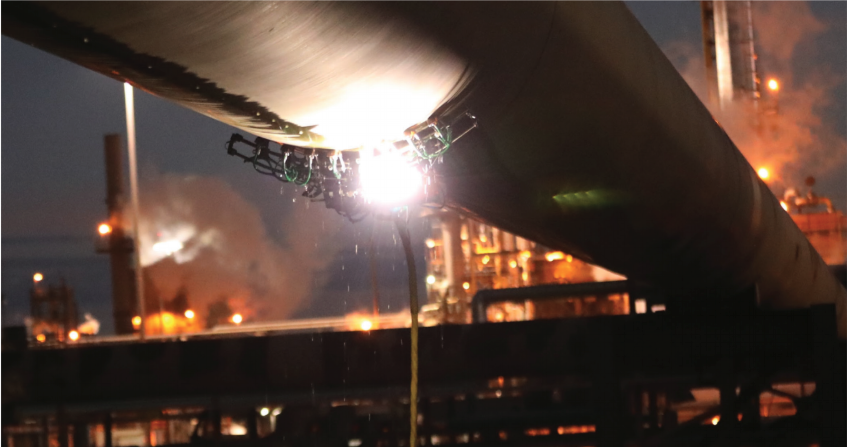Introduction
Advancements in electro-mechanical hardware and software are spurring rapid growth in the emerging field of robotics. These advancements have lead to innovations in the design and construction of robots that are now providing more practical solutions in the commercial, military, and even personal consumer sectors. More specifically, robotic technologies in the oil and gas industry are evolving to provide new benefits to mechanical integrity, inspection, and reliability. The acceptance, workflow integration, and continued iteration of these robotic technologies will prove to make these benefits limitless.
Definition
The field of “robotics” is an interdisciplinary branch of engineering and science that includes mechanical engineering, electrical engineering, computer science, information engineering, and many other specialties. Robotics consists of the design, construction, and operation of electro-mechanical machines, in conjunction with the programming of computer systems for their control, sensory feedback, and information processing, thus making those machines “robots”.
Today, the most practical applications for robotic technology are in the development of machines that can substitute for humans in dirty and unsafe environments and that can replicate actions that are inefficient for humans. Currently, many robots are being used in dangerous environments (e.g., bomb detection and deactivation), manufacturing processes (very repetitive tasking), and places where humans cannot survive for extended periods (e.g., space, underwater, high heat environments, and near hazardous materials and radiation). Robots can take on many form factors and be used in many different environments, but they are ultimately defined as intelligent electro-mechanical machines that utilize sensory feedback and software to alter their production or output.

History in Oil & Gas
One of the oldest forms of robotics in the oil and gas industry is a control valve. Operators have been utilizing control valves and emergency isolation valves (EIVs) for nearly 100 years. Normally, these valves may not be thought of as robots, but both have robotic functions being used to assist humans.
The control valve was invented for process control. Designed to eliminate the constant manual, human manipulation of a valve position, the control valve uses inputs from a measuring device to regulate flow, pressure, or temperature by automatically adjusting the valve position based on the variation of the input signal.
EIVs were created as a safety device. In the event of a leak or other hazardous event, the process can be shut down and isolated remotely without the risk of human exposure.
Control valves and EIVs have not eliminated the need for the human operator though. Simply put, they reduce the exposure risks associated with manual operation of the valves, but the operator still serves several critical functions. Operators still ensure the automation takes place when needed and perform routine checks to ensure that the equipment is in good working order and will function properly when needed.
Over the last 20 years, the use of robotics for inspections in the oil and gas industry has been minimal, yet proven very effective where utilized. Inspection companies, for example, have been using rovers and magnetic crawlers with cameras to take pictures of inaccessible areas that require extensive resources to access, like flare stacks, tank roofs, blow out preventers, off-shore piping, etc. Single-probe, magnetic UT crawlers have also been utilized to gain access to otherwise inaccessible locations for the gathering of UT thickness data. These same methods are still used today, but have evolved significantly from their original forms.
Since its introduction to the oil and gas industry, robotics in mechanical integrity, inspection, and reliability has shown four primary benefits:
- Reduced risk of human exposure
- Increased data quality
- Improved efficiency of data collection and analytics
- Minimized operations interruptions

















Comments and Discussion
Add a Comment
Please log in or register to participate in comments and discussions.